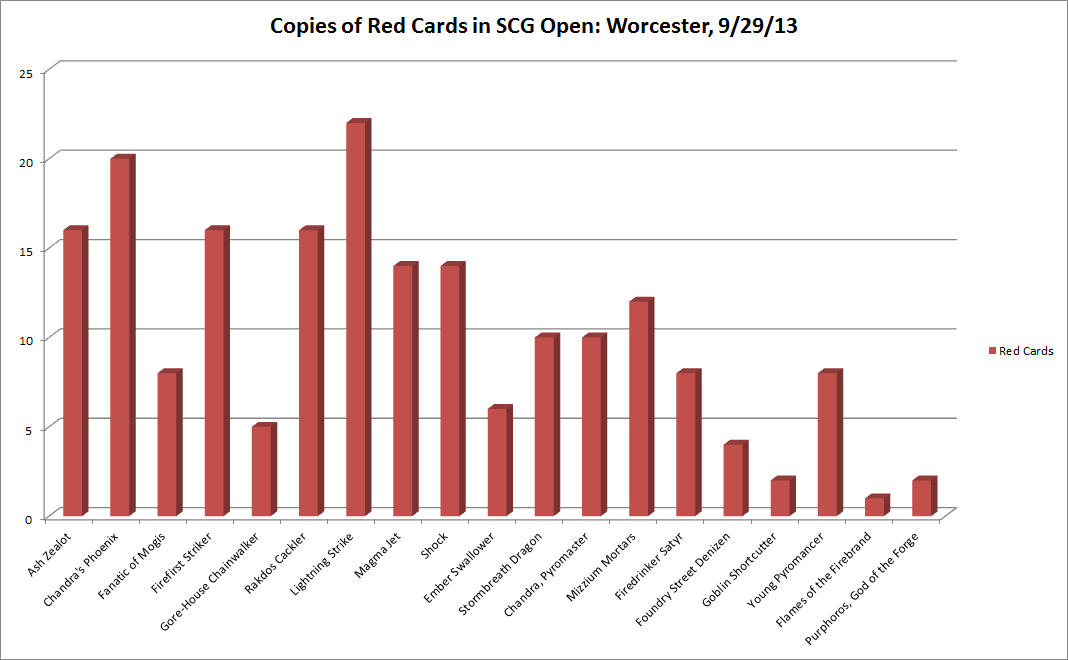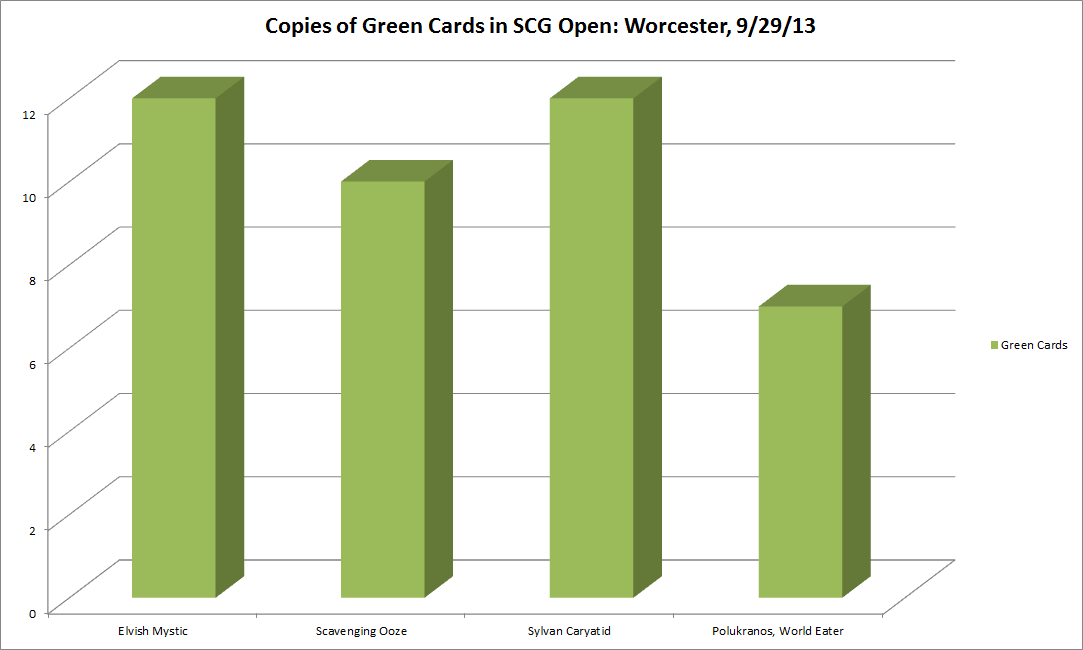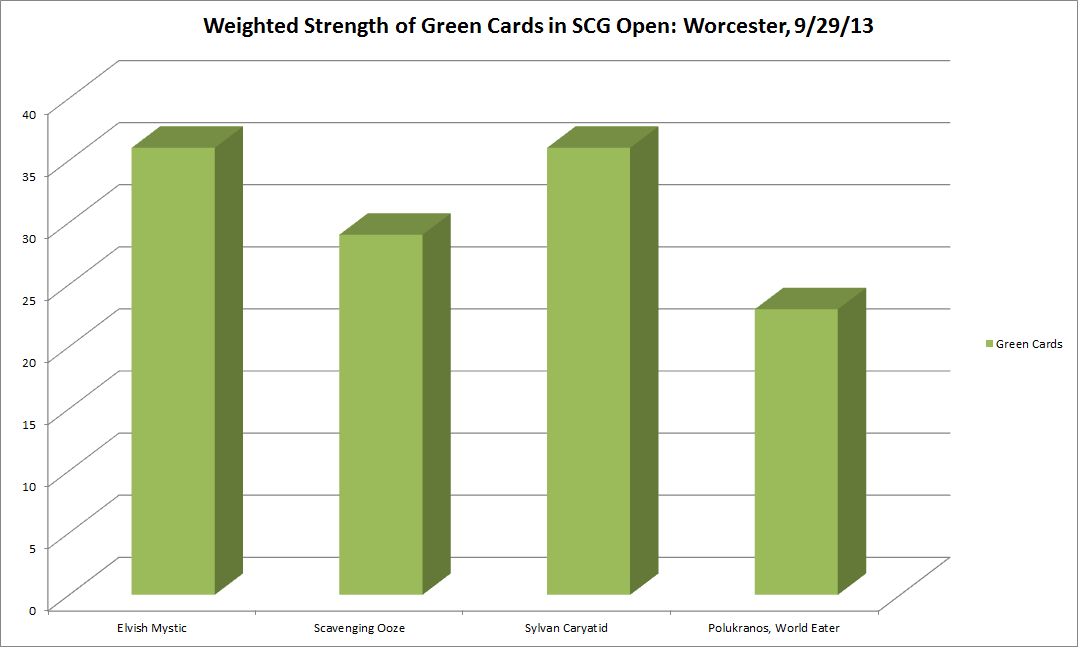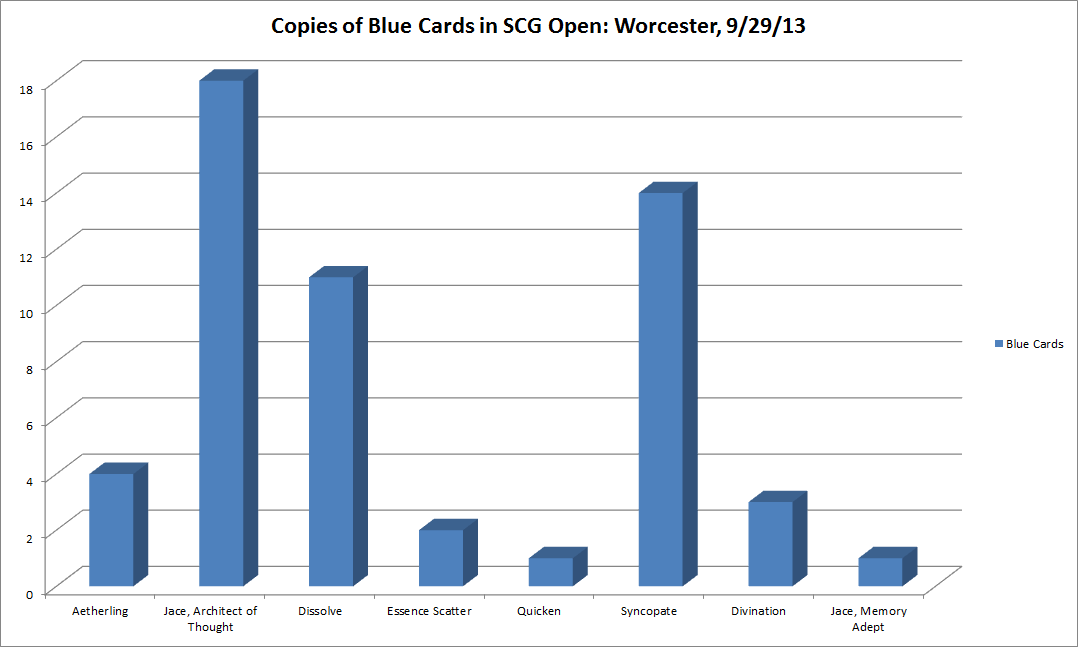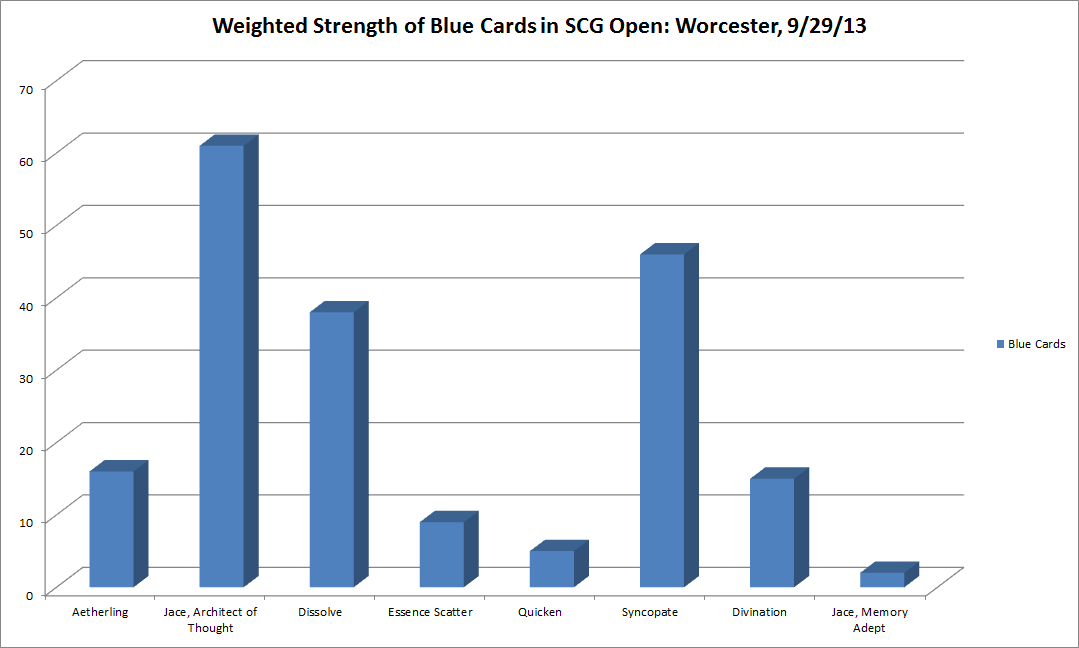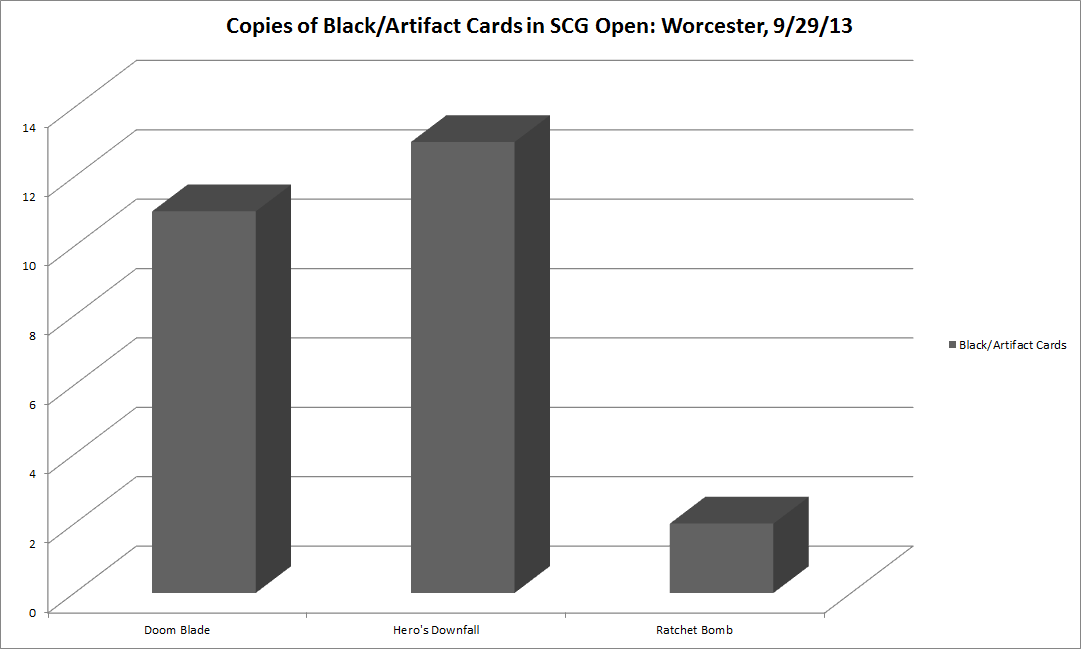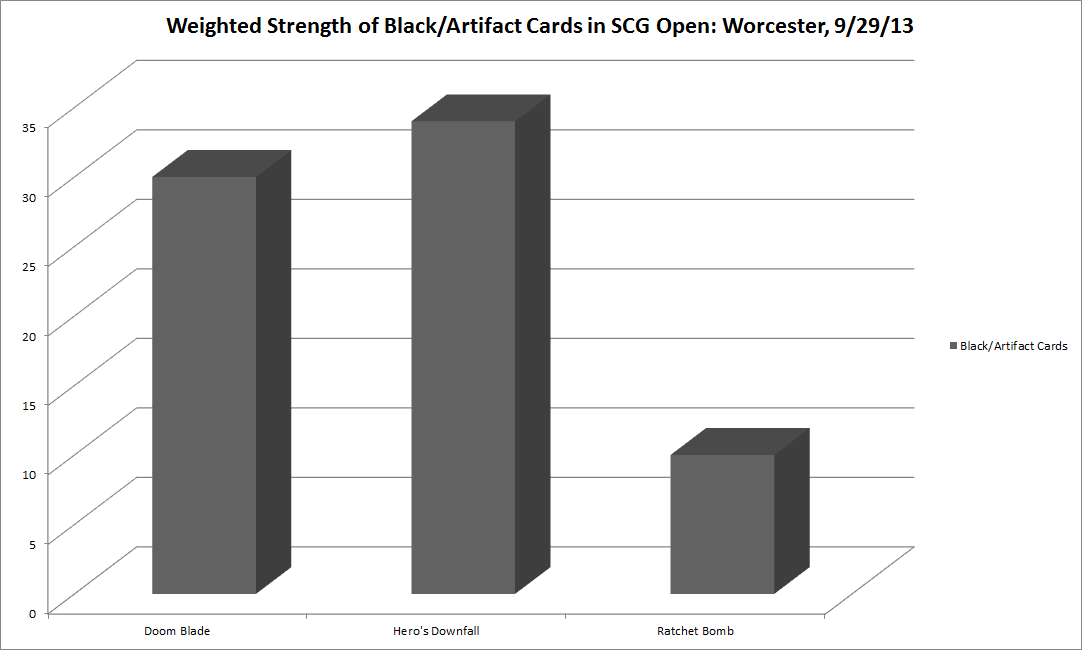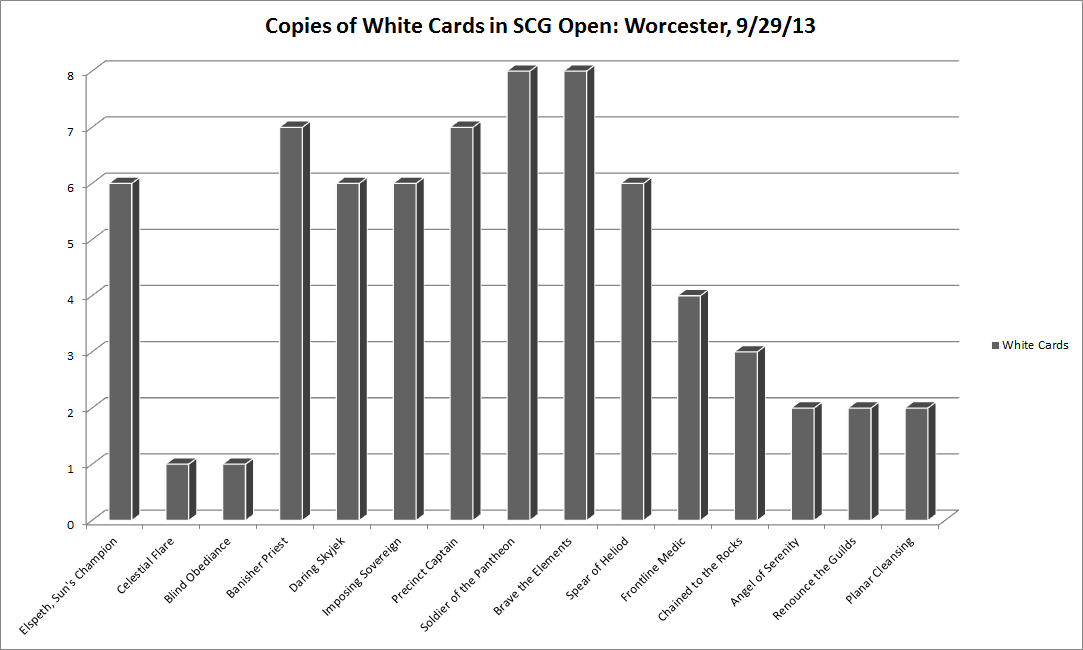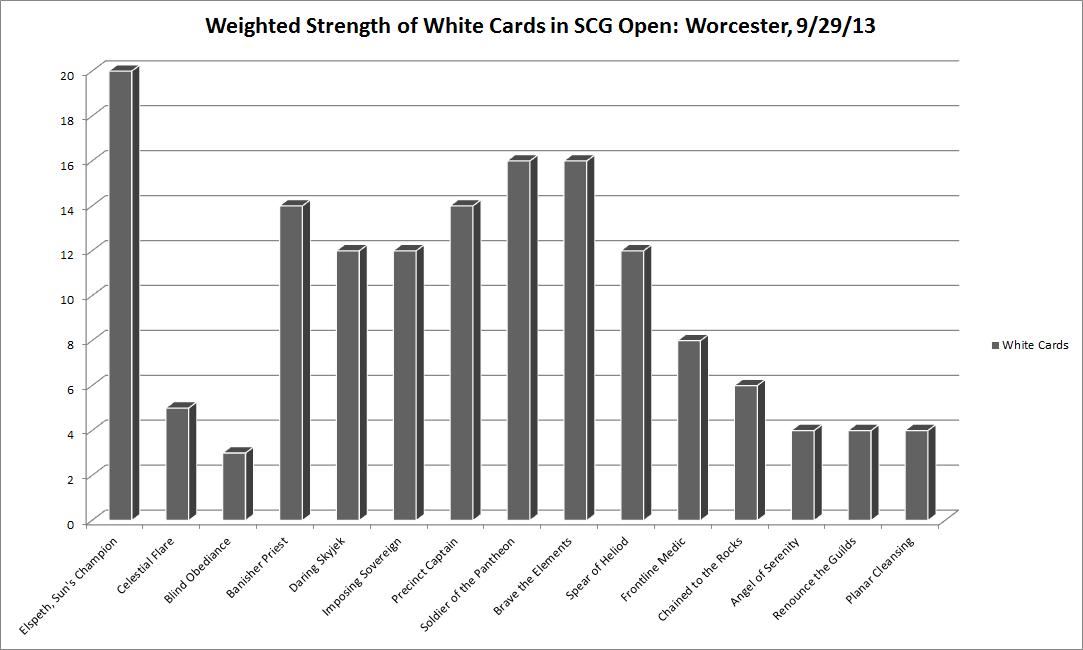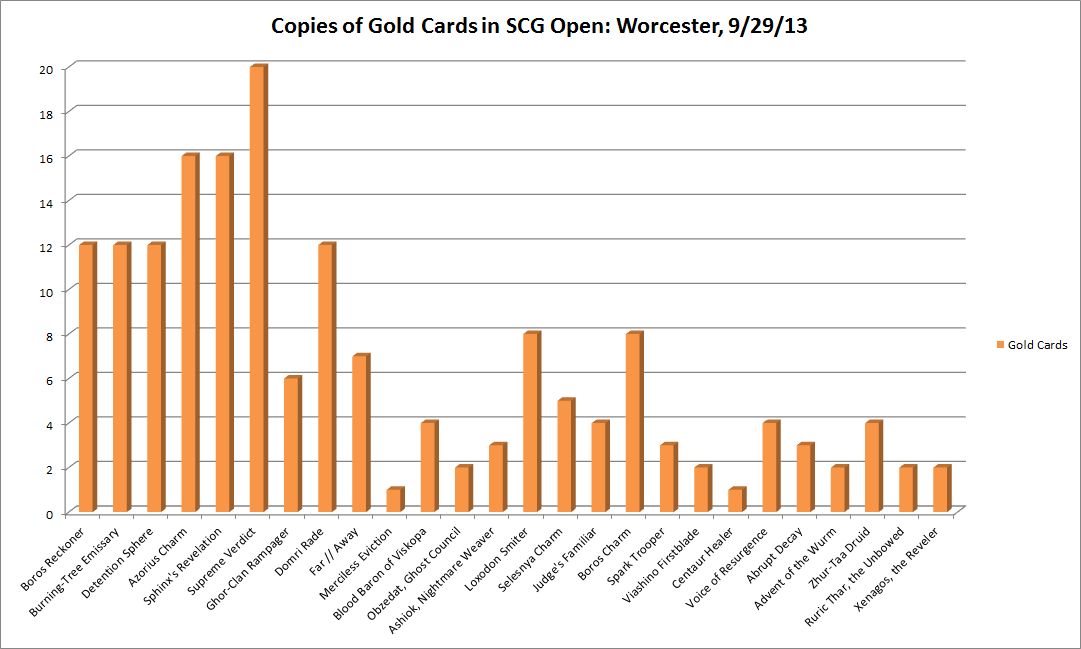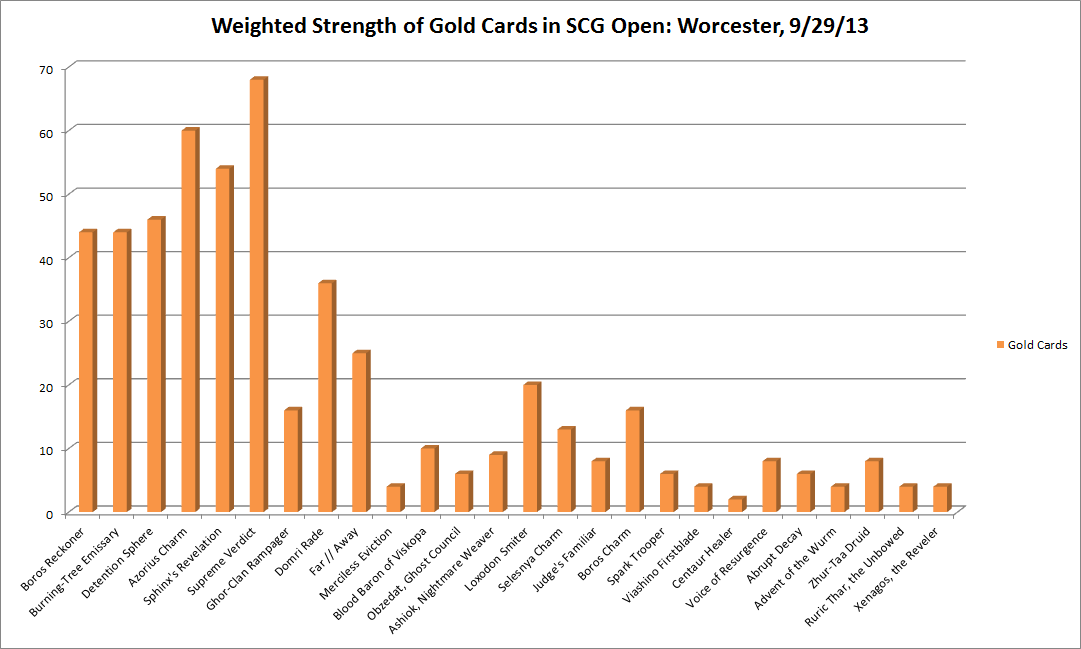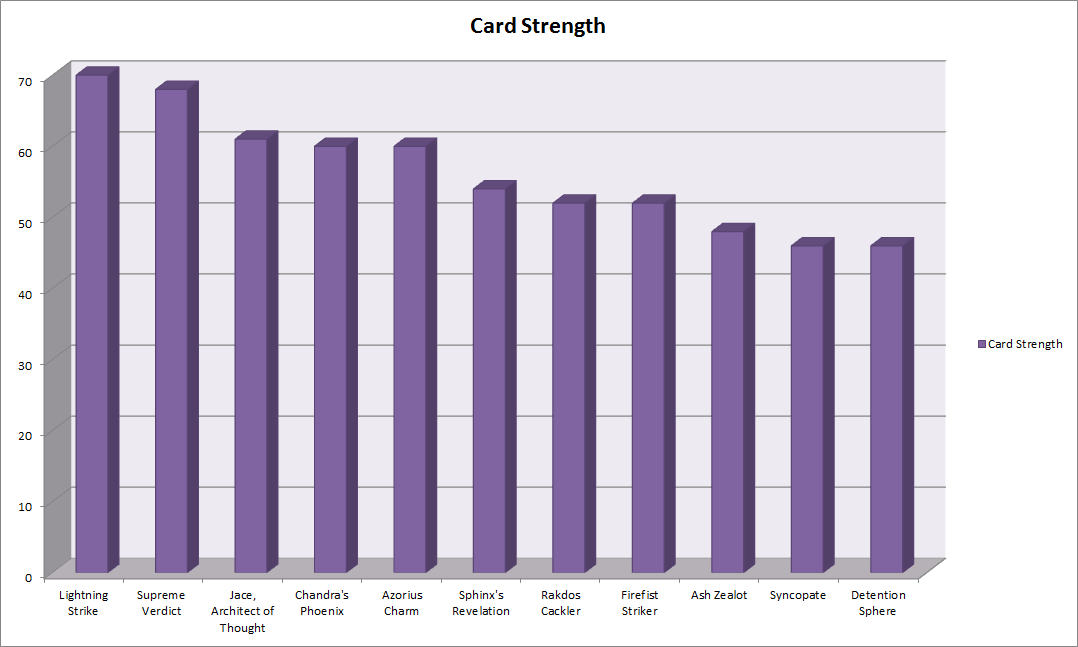The period immediately before a set release is a time of significant speculation and experimental decklists, whereas the week immediately after, especially when there has been a StarCityGames.com Open Series event, is a time of reconceptualization. We understand that not every viable archetype or the best version of every deck will appear at the first event of a new format. But with each event our understanding grows, and we’re able to better design decks to combat the evolving metagame.
There are a lot of different ways that we can approach this process. A broad, macro-level approach might involve looking at the different archetypes to see which strategies are performing well. A different, micro-level approach, one that we’ll use today, involves looking at individual cards in order to obtain some clues about the format.
There are some limitations to the card-based analysis. Most notably, archetypes matter! Seeing four copies of Ember Swallower doesn’t mean that "red" is doing well; it probably means that some sort of R/G ramp strategy is doing well. At the same time, however, a format in which we might play against Ember Swallower is different than a format in which we won’t.
A second limitation is that the relative strength of the cards isn’t captured by their frequency of appearance. If eight copies of Ash Zealot appear in the fifteenth and sixteenth place decks but none appear in the first or second place decks (not a real example incidentally), then we should treat that statistic differently somehow. Third, this analysis doesn’t include lands because mana bases are a separate consideration and are less prone to this type of examination. That topic merits a separate article.
Thus, what I’ll be presenting today is a series of charts illustrating both frequency of cards in the Top 16 of SCG Standard Open: Worcester and their relative strength. For this article, I used a very blunt concept to calculate strength, which is to assign tiers to finishes (Winner, Finalist, Top 4, Top 8, and Top 16) and then weigh the frequency of cards by the strength of the finish. Like the overall approach, this process has limitations, but it’s a reasonable place to begin.
Red
It’s worth noting that here and elsewhere the differences between the weighted strengths and the raw number of copies will be relatively proportional as a function of how the process is structured. However, there are some key differences that we can address. First, it’s worth noting that there were a lot of red cards in the Top 16 in general across three primary archetypes: G/R Monsters, Mono-Red Aggro, and W/R Aggro.
Lightning Strike and Chandra’s Phoenix were both the most prevalent and the strongest red cards. Surprise hit Fanatic of Mogis came out ahead of cards like Gore-House Chainwalker, which is only really strong in a Sligh-style deck. Despite the same number of them seeing play, Magma Jet slightly edged out Shock in terms of weighted strength. There were surprisingly few copies of Young Pyromancer and no copies of Ogre Battledriver, perhaps signaling anticipation of a very large number of Supreme Verdicts in the field.
Green
Green only appeared in the Top 16 when it was contributing to a ramp or Junk strategy; there were only four mono-green cards among all of the decks! Two of those cards were mana accelerants, one was a utility card (Scavenging Ooze), and one was a ramp target (Polukranos, World Eater). There are really no surprises here; although green will make another appearance in the multicolored section, it simply isn’t well positioned right now to contribute to other types of decks.
Blue
There were basically two flavors of control in the Top 16: U/W Control and Esper Control. While both strategies had a variety of multicolored cards in them, there were three prevalent and strong cards common to them: Syncopate; Jace, Architect of Thought; and Dissolve. While Aetherling appeared as a finisher several times, it was rarely more than a singleton. Despite its perceived weaknesses as stated in articles on this and other websites, Syncopate made a surprisingly strong showing, perhaps owing to the limitations that Dissolve has when dealing with a series of one- and two-drop creatures. This data may suggest that Syncopate is the counterspell that better manages the metagame even though it is worse in the abstract and a weaker card for the mirror match.
Black/Artifact
There were so few mono-black cards in the best-performing decks that I rolled the single artifact into this table as well. Black, like green, clearly plays a specific supporting role in control and midrange decks. Doom Blade and Hero’s Downfall duked it out for slots in the same decks, with the fundamental question being whether the more difficult casting cost (1BB vs. 1B) was worth the increased utility of being able to kill planeswalkers. Hero’s Downfall performed slightly better and appeared slightly more frequently in the Top 16, though it was a pretty close race. Many players simply opted for a split.
White
The mono-white cards from the Top 16 provide us with a good example of why it’s good to look not only at frequency of appearance but also the strength of those appearances. There are two ways in which mono-white cards contributed to the tournament. The first was white-based aggro decks, of which there were several in the Top 16. The second was control lists with a white component. If we look only at frequency, it appears as though Soldier of the Pantheon was a stronger card at the tournament, but if we weight the results by frequency, we see that Elspeth, Sun’s Champion was probably the stronger card on Sunday. At the same time, if we decide to play a white aggro deck, then it looks like Soldier of the Pantheon and Brave the Elements are two cards that are highly important to the strategy.
Gold
Before we even approach the overall graph, it’s interesting to notice that Voice of Resurgence is very far down the charts, with only four copies appearing in one deck in the entire Top 16. Aside from Rakdos Cackler, which I mistakenly inserted into the red chart (and am perfectly content to leave there, as it is basically a red creature), the strongest gold cards are those that support U/W/x Control. The second most frequently used gold cards interestingly are those that are played in Mono-Red Aggro (Boros Reckoner and Burning-Tree Emissary). The G/R Monsters deck has a few also-rans in Ghor-Clan Rampager and Domri Rade, but the field appears fairly bifurcated based on these numbers.
While it can be interesting to separate cards by color in order to get a picture of how decks might look, it’s also interesting to determine the "Top 11" strongest cards (there is a tie for tenth place) from the first SCG Standard Open with Theros in Worcester. While it is useful to know that U/W-based Control and Mono-Red Aggro are likely public enemy number one and two, knowing the cards that most often will be used in those strategies can also be important.
So here are the cards we either need to be using or need to be especially prepared for next week:
One major takeaway: there’s almost no way that we will play through an entire tournament without contending with Supreme Verdict. Any aggressive deck that we play has to have reach (thus the strength of cards like Chandra’s Phoenix) and resilience. By the same token, any control deck that we play has to be able to manage a very quick start and cannot simply load up on copies of Negate or Counterflux in the maindeck. The best deck for next week will be the one that strikes a balance between those two competing needs most efficiently.
If you’re playing in the StarCityGames.com Standard Open in Cleveland this weekend, good luck in both the tournament and finding that proper balance.

